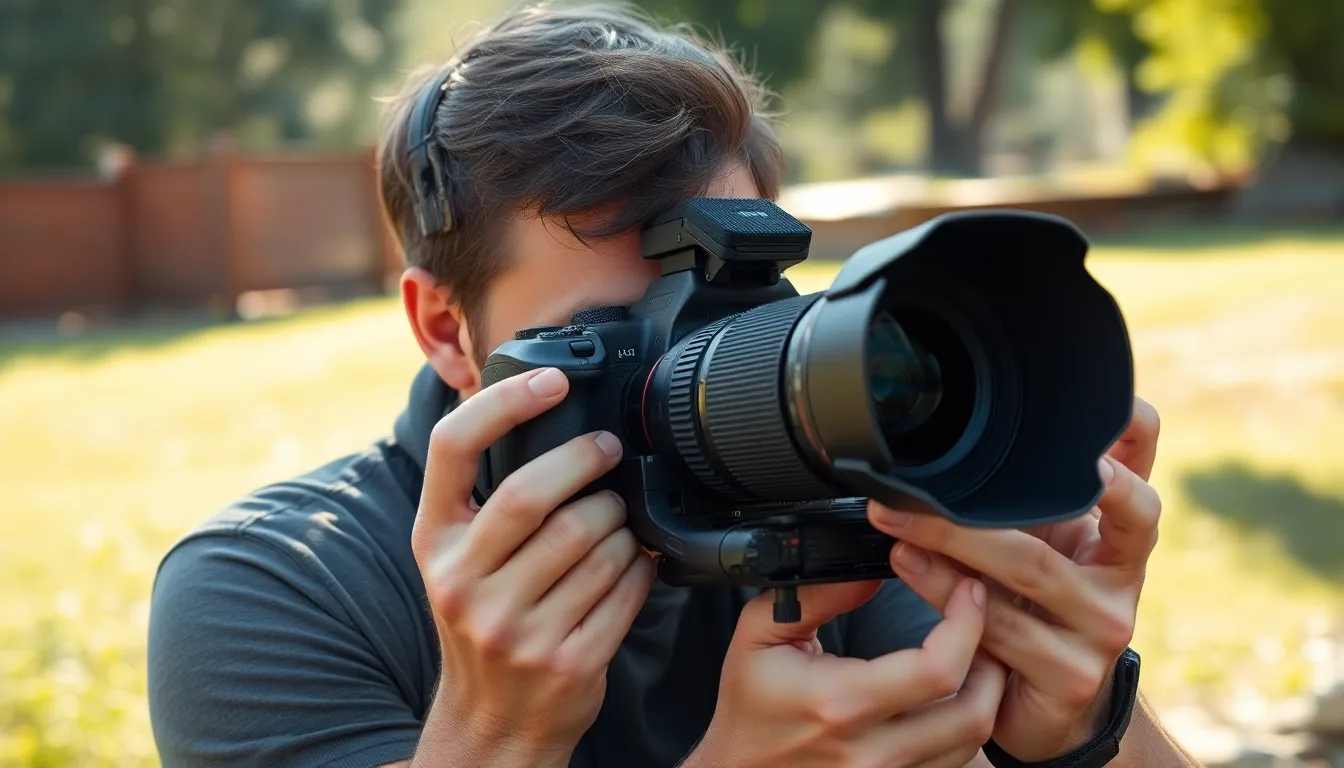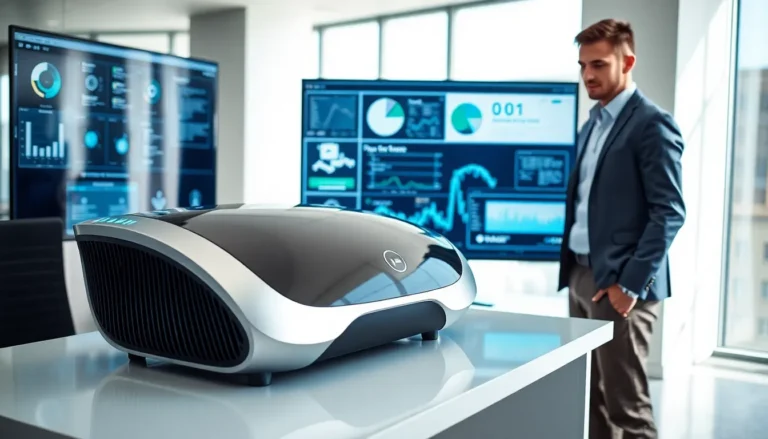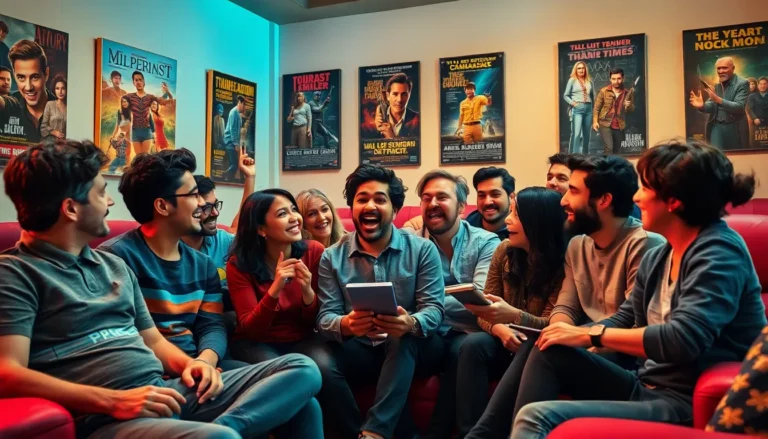In a world where smartphone cameras reign supreme, the iPhone often steals the spotlight. But let’s face it—sometimes, a smartphone just doesn’t cut it for serious photography. Whether you’re a budding photographer or a seasoned pro, there are cameras out there that can make your iPhone look like a toy in comparison.
Imagine capturing stunning landscapes or portraits with vibrant colors, rich details, and that oh-so-satisfying depth of field. From DSLRs to mirrorless options, the right camera can elevate your photography game to new heights. So, if you’re ready to trade in your iPhone for something that truly delivers, buckle up! This guide will explore some of the best alternatives that’ll have you snapping jaw-dropping shots in no time.
Table of Contents
ToggleOverview of Smartphone Cameras
Smartphone cameras, including the iPhone, have evolved remarkably over the years. Many users appreciate the convenience of having a camera integrated into their phones. These devices typically feature easy-to-use interfaces, allowing quick access to photography tools. Equipped with multiple lenses, smartphones can capture various perspectives, from wide-angle landscapes to detailed close-ups.
Despite these advancements, smartphone cameras still face limitations in certain scenarios. Low-light conditions often challenge these devices, resulting in noise and reduced clarity. Depth of field and bokeh effects, common in professional photography, remain limited compared to dedicated cameras. Users seeking superior image quality often find that camera sensors in DSLRs and mirrorless models outperform smartphone sensors in size and technology.
Many smartphone cameras offer impressive software enhancements. Features like computational photography can enhance image quality by adjusting exposure, sharpening details, and improving color accuracy. However, reliance on software can sometimes lead to artifacts or unnatural-looking images.
Most professionals turn to dedicated cameras for their versatility and control over settings. Adjusting aperture, shutter speed, and ISO on a DSLR or mirrorless camera allows users to fine-tune their shots. Lenses for these cameras often provide superior optical performance, making it easier to achieve the desired artistic effect.
Factors such as lens selection, sensor size, and overall build quality contribute to the distinction between smartphone cameras and dedicated cameras. While smartphones excel in portability and accessibility, dedicated cameras remain the preferred choice for serious photographers. Understanding these differences helps users determine the best option for their photography needs.
Key Factors to Consider

When evaluating cameras superior to an iPhone, several critical factors come into play. Understanding these elements aids in making an informed decision for any serious photography endeavor.
Sensor Size
Sensor size significantly impacts image quality. Larger sensors capture more light, resulting in better detail and less noise, especially in challenging conditions. Many dedicated cameras, like DSLRs and mirrorless models, feature larger sensors compared to smartphone cameras. These larger sensors improve dynamic range, allowing for richer colors and better shadow details. Camera systems often offer full-frame or APS-C sensors, which deliver professional-grade results. Smartphones, in contrast, rely on smaller sensors that may struggle in low-light environments. Prioritizing sensor size allows photographers to achieve enhanced image quality.
Lens Quality
Quality of lenses plays an essential role in photography. Dedicated cameras provide the opportunity to switch lenses, enabling specific styles and effects. High-quality lenses often have superior optics, producing sharper images and reduced distortion. Specialized lenses, such as prime, wide-angle, or telephoto options, can expand creative possibilities. Smartphone cameras typically use fixed lenses, limiting versatility. Lens coatings on higher-end models also reduce glare and enhance contrast, improving overall image quality. Investing in quality lenses can significantly elevate a photographer’s creative output.
Low-Light Performance
Low-light performance matters for shooting in dim conditions. Larger sensors and quality lenses enhance performance during nighttime or indoor photography. Dedicated cameras often excel in low-light scenarios, handling higher ISO settings effectively without excessive noise. This capability leads to clearer images and better detail retention in shadows. Smartphones generally struggle in these settings, resulting in grainy or blurry photographs. Improvements in dedicated cameras’ design enable photographers to achieve stunning images, even where ambient light is limited. For serious photographers, low-light performance becomes a crucial consideration when choosing camera gear.
Popular Cameras That Outperform iPhone
Dedicated cameras, including mirrorless and DSLR options, offer significant advantages over the iPhone, particularly for serious photography enthusiasts.
Mirrorless Cameras
Mirrorless cameras deliver high image quality and compact designs, making them ideal for travel and everyday use. These cameras often feature larger sensors than those found in smartphones, capturing more detail and light. They support interchangeable lenses, allowing users to choose the best lens for their specific needs. The autofocus systems in many mirrorless models are also faster, ensuring sharp images even in dynamic environments. This capability, combined with advanced video performance, attracts both amateur and professional photographers seeking versatility.
DSLR Cameras
DSLR cameras remain popular for their robust performance and extensive feature sets. Many DSLRs contain larger sensors, which enhance low-light capabilities while producing images with more depth and clarity. They provide users with comprehensive control over settings, including shutter speed and aperture, allowing for creative expression. High-quality optics and lens options are prevalent, catering to various photographic styles. Photographers often appreciate the optical viewfinder in DSLRs for a clearer shooting experience under bright conditions.
Compact Cameras
Compact cameras, often referred to as point-and-shoots, combine ease of use with superior image quality. Many models incorporate larger sensors, capturing vibrant colors and sharp details that surpass those of smartphones. These cameras typically excel in low-light situations, reducing grain and blurriness in photos. While they may not have the same level of manual controls as mirrorless or DSLR cameras, many compact models offer features like optical zoom and advanced shooting modes. Enthusiasts looking for a lightweight option often find compact cameras appealing without sacrificing quality.
Professional vs. Consumer Cameras
Professional cameras, such as DSLRs and mirrorless options, offer significant advantages over consumer devices like smartphones. Dedicated cameras often feature larger sensors, capturing more light and enhancing detail, crucial in challenging lighting situations. They excel in dynamic range, producing images with greater depth and richness.
Interchangeable lenses provide greater creative flexibility, allowing photographers to select the ideal lens for each shot. With options ranging from wide-angle to telephoto, dedicated cameras enable users to explore various photography styles. Consumer cameras typically come with fixed lenses that limit this versatility.
Low-light performance stands out for professional cameras. They handle higher ISO settings effectively, minimizing grain and maintaining image clarity. Smartphones often struggle under similar conditions, leading to blurry or overly grainy photos.
Usability varies greatly between these camera types. Professional cameras might have a steeper learning curve, but they offer extensive control over settings like aperture, shutter speed, and ISO. This level of control is essential for fine-tuning images to achieve specific artistic outcomes.
When considering compact cameras, point-and-shoot models still deliver impressive image quality. They often integrate superior sensors and lenses, which aid in low-light conditions. While they may not match the versatility of DSLRs or mirrorless systems, these cameras provide ease of use for casual shooting.
Overall, the choice between professional and consumer cameras hinges on photography goals. Serious photographers benefit from the advanced capabilities of dedicated options, enhancing their creative expression and overall image quality beyond what smartphones can offer.
For those serious about photography the advantages of dedicated cameras over smartphones like the iPhone are clear. With superior sensor sizes and lens options these cameras deliver exceptional image quality and performance in various conditions. Whether opting for a mirrorless camera for its portability or a DSLR for its extensive features photographers can achieve stunning results that smartphones simply can’t match.
Ultimately the choice of camera should align with individual photography goals. Serious enthusiasts and professionals will find that investing in dedicated gear opens up a world of creative possibilities and enhances their ability to capture breathtaking images.




